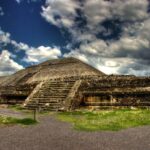Research studies suggest that the sustained attention span for college students during lectures in classroom settings or while studying is around 10 to 15 minutes [1-3]. Mobile phone usage or digital environments, especially in online learning and multitasking, reduces focus further to 3-5 minutes per task [4-6]. The factors affecting average attention span include interest in the subject, stress and mental health, sleep and nutrition, teaching style, and digital distractions [7-9]. The growing popularity of microlearning educational approaches in the digital age is clear when the content is delivered in small, focused segments in the classroom settings or digital learning environments, in an age of information overload [10-14]. Microlearning works with a limited attention span as key information is presented before cognitive fatigue sets in. It reduces cognitive overload by splitting complex topics into manageable chunks and enhances retention due to the spacing effect and memory reinforcement.
Minilectures and Microlearning
Minilectures are highly useful in the present-day context for several reasons, especially considering the changes in how youngsters learn, work, and consume specific information [15-17]. Learners prefer quick, focused content available on demand in bite-sized modules. Microlearning strategies break down complex topics into simple, small chunks that fit into their schedules and enhance retention and recall when paired with interactive or visual content. This strategy supports blended learning, mixing face-to-face instruction in the classroom setting and online methods on learning platforms effectively. This microlearning technique with visuals, animations, quizzes, or examples enhances engagement compared to traditional longer lectures. Multinational companies use minilectures for onboarding, skill development, and compliance training. Artificial intelligence-driven platforms use minilectures to deliver personalized learning paths. Learners can choose relevant content, skipping the irrelevant ones.
Microlearning, characterized by short, focused learning content, enhances learner engagement, improves information retention, and offers flexibility to study at their own pace and convenience [18-20]. This targeted learning approach allows for precise knowledge delivery and skill development, enabling them to apply knowledge immediately to their tasks at hand and supports a continuous learning culture without the risk of cognitive overload and information fatigue. However, complex topics with depth should be presented in a concise format without losing the overall perspective or in-depth understanding. Shorter development cycles and reduced resource requirements make microlearning cost-effective. Microlearning requires careful planning and design to ensure that the content is relevant, engaging, provides a clear overall picture, and is aligned with learning objectives.
Microcredentials and Modular Learning
Microcredentials are short, focused, and competency-based certifications that demonstrate specific knowledge and skills as learning outcomes [21-24]. These credentials or digital badges demonstrate an initiative, show a commitment to professional development, real-world readiness, and enhance a curriculum vitae/portfolio. The duration may range from a few hours to several weeks. It can be tailored to individual learning needs/career goals to gain a competitive edge in today’s employment market for learners. Reputed institutes can offer targeted upskilling, reskilling, and relearning experiences, expanding their reach to relevant fields. It is easier for employers to assess candidates’ skills and identify potential employees quickly. Examples of microcredentials include cloud computing, cybersecurity, project management, digital marketing, technological leadership, big data analytics, space robotics, and software proficiency.
This approach makes learning more engaging and effective, preparing learners for the demands of a rapidly evolving world. Investing in digital literacy/fluency and skill development is crucial for equipping the workforce for the AI-driven economy and empowering every citizen through the higher education system. It is essential to strive for a balance between both depth of knowledge and expertise in a specific area and breadth of knowledge across multiple areas. Specialized and relevant knowledge with a focused study and practice should be complemented by the ability to connect it to broader contexts across various disciplines. Expert-level understanding allows for detailed analysis, problem solving, and innovation within a particular area, whereas contextual understanding enables connection between different fields, fostering critical thinking and adaptability. In essence, depth provides expertise and precision, while breadth offers context and perspective, making both essential for effective understanding of the world and bridging the workforce gap.
Modular learning breaks down subjects into bite-sized courses, allowing learners to select the subtopics based on market demand [25-29]. Microcredentials play a significant role as an add-on value to traditional degrees, helping youngsters stay sharp in a world where skills/knowledge become outdated quickly. These exclusive certification courses can be stacked like building blocks over time, enhancing one’s portfolio, staying industry-relevant, and satisfying real job requirements.
Online short learning programs offer flexibility, affordability, and practical knowledge that connects directly with diverse, complex, and real-world scenarios. Experienced teachers or industry experts can provide the specialized knowledge, guidance, and discipline to build core competencies and the confidence to apply them in structured classroom learning. Enhancement modules such as domain-specific technical training, soft and communication skills, resume-building and interview skills, aptitude and logical reasoning, artificial intelligence, virtual reality, collaborative problem solving, and data analytics further broaden learners’ perspectives.
Micro-laboratory sessions in higher science education enhance our capacity for deep thought, skill development, reflection, reasoning, and retention, and develop a spirit of experimentation. Interdisciplinary learning boosts learners’ ability and confidence to work across disciplines, find solutions to complex global challenges, and innovate for the greater good of humanity.
Sustained attempts by educationists, activists, and think tanks to nurture quality higher education with like-minded professionals (groups and individuals) are essential to promote active microlearning and minilecture culture. However, it is crucial to work on a command-and-control center to track real-time lectures in the higher education ecosystem. Finding quality trainers and establishing a dynamic curriculum with industry readiness that can adapt to the ever-evolving need to cultivate better narrators is a current challenge. Additionally, substantial, sustained investments in digital infrastructure and artificial intelligence R&D are essential to drive innovation in teaching and advancing experiments to create new knowledge and actionable insights.
Redefining Science Higher Education
Unlocking human potential, sparking a thirst to learn, and fuelling exploration beyond books, confidence to work across domains, and commitment to excellence are essential in the higher education system. The learner-centric academic approach to educational fabric involving experiential learning, dynamic corporate collaboration, and global exposure significantly strengthens the three pillars of career direction and evolution: placements, higher studies, and entrepreneurship. Educational programs that provide multidisciplinary perspectives and foster ample institute-industry interactions encourage transformative research, supervised by research faculty to navigate the evolving global scientific landscape and super specializations.
Students should be equipped with technological acumen to analyse complex scientific data, deep insights into a robust ecosystem for nurturing start-ups, and technological resources management. Integration of scientific knowledge with real-world applications and value-added certifications helps prepare students for future-focused careers with enhanced brainpower. These programs must allow students to tailor their learning based on diverse career goals and emerging market/academic/research needs for skilled professionals. Microcredentials and microlearning in practical, relevant, and high-demand areas substantially boost global employability/entrepreneurial prospects [30-33].
Conducting invited expert lectures, workshops, conferences, seminars, live industry projects, internships, industrial/field visits, case studies, simulations, and faculty/student development programs and interaction with some of the top academicians and leading industry experts promotes overall/holistic growth of the students, while maintaining academic rigor and quality, real-world exposure, and innovative solutions. It is essential to learn the latest developments, tools, trends, and techniques in each domain. Creating an ecosystem of empowered learners, responsible citizens, skilled and competent professionals, and future ethical leaders in specific domains is the hallmark of transformative higher education with clarity, conviction, and quality academic delivery. Institutions/universities providing intellectually stimulating environments and consistent nurturing have a powerful influence on shaping how young minds grow. Investing in potential based on intellectual curiosity, elective flexibility, critical thinking, breakthrough innovation, collective responsibility, civic engagement, and academic quality to shape professionals and changemakers, redefining higher science education.
Conclusions
Perspectives on microlearning and microcredentials in higher education are presented in this article. Learners can customize their educational path through personalized, flexible education modules based on their career goals, skill gaps, and interests. Learners can upskill, reskill, or relearn quickly and gain practical, relevant industry skills, minimising skill mismatches. Microcredentials and modular learning are well-suited for online delivery, and institutions can allow stacking of microcredentials as a part of the full degree/diploma program without sacrificing academic rigor. Modular formats complement shorter attention spans among young learners, supporting focus patterns linked to microlearning principles. Academic credit transfer systems for microcredentials are still evolving, and there is a need for strict quality control, curriculum frameworks, and standardization across providers. Also, continued collaboration between academia, industry, and policymakers for long-term impact is required. Transforming higher education with microlessons provides an exciting educational experience to young learners.
References
- Lanyu, D. (2025). Attention Span. In The ECPH Encyclopedia of Psychology (pp. 98-98). Singapore: Springer Nature Singapore.
- Zeqiri, L. (2024). Attention span and concentration: A review of undergraduate students’ responses and practices. In Conference Book of Proceedings.
- Parashar, A., Biyani, H., Biswas, S., Sukte, C., & Saigal, A. (2021). A study on automatic attention span detection of students. International Journal for Research in Applied Science & Engineering Technology, 9, 1849-1854.
- Aivaz, K. A., & Teodorescu, D. (2022). College students’ distractions from learning caused by multitasking in online vs. face-to-face classes: A case study at a public university in Romania. International journal of environmental research and public health, 19(18), 11188.
- Bowman, L. L., Waite, B. M., & Levine, L. E. (2015). Multitasking and attention: Implications for college students. The Wiley handbook of psychology, technology, and society, 388-403.
- Lepp, A., Barkley, J. E., Karpinski, A. C., & Singh, S. (2019). College students’ multitasking behavior in online versus face-to-face courses. Sage Open, 9(1), 2158244018824505.
- Naglieri, J. A., Das, J. P., & Jarman, R. F. (1990). Planning, attention, simultaneous, and successive cognitive processes as a model for assessment. School Psychology Review, 19(4), 423-442.
- Avoyan, A., Ribeiro, M., Schotter, A., Schotter, E. R., Vaziri, M., & Zou, M. (2024). Planned vs. Actual attention. Management Science, 70(5), 2912-2933.
- Ortega, L. (2008). What do learners plan? Learner-driven attention to form during pre-task planning. In Planning and task performance in a second language (pp. 77-109). John Benjamins Publishing Company.
- Romanenko, Y. N., Solodovnikova, E., & Maksimenko, N. (2023, May). Microlearning as a new method of teaching soft skills to university students. In Frontiers in Education (Vol. 8, p. 1177516). Frontiers Media SA.
- Kumar, N. (2024). Innovative approaches of e-learning in college education: Global experience. E-Learning Innovations Journal, 2(2), 36-51.
- Sankaranarayanan, R., Leung, J., Abramenka-Lachheb, V., Seo, G., & Lachheb, A. (2023). Microlearning in diverse contexts: A bibliometric analysis. TechTrends, 67(2), 260-276.
- Shatte, A. B., & Teague, S. (2020). Microlearning for improved student outcomes in higher education: A scoping review.
- Corbeil, J. R., Khan, B. H., & Corbeil, M. E. (2021). Microlearning in the digital age. Taylor and Francis. doi, 10, 9780367821623.
- Toto, J., & Booth, K. (2008). Effects and implications of mini-lectures on learning in first-semester general chemistry. Chemistry Education Research and Practice, 9(3), 259-266.
- Hulls, C., & Rennick, C. (2016). The use of a series of online mini-lectures to deliver facts in first-year programming. Proceedings of the Canadian Engineering Education Association (CEEA).
- Phillips, D. (2010). Teaching problem solving with mini-lectures and worksheets. In INTED2010 Proceedings (pp. 5780-5783). IATED.
- Fitria, T. N. (2022). Microlearning in teaching and learning process: A review. CENDEKIA: Jurnal Ilmu Sosial, Bahasa Dan Pendidikan, 2(4), 114-135.
- Shatte, A. B., & Teague, S. (2020). Microlearning for improved student outcomes in higher education: A scoping review.
- Kohler, M., Gamrat, C., Raish, V., & Gross, E. (2021). Microlearning and micro-credentials in higher education. In Microlearning in the digital age (pp. 109-128). Routledge.
- Ahmat, N. H. C., Bashir, M. A. A., Razali, A. R., & Kasolang, S. (2021). Micro-credentials in higher education institutions: Challenges and opportunities. Asian Journal of University Education, 17(3), 281-290.
- Ahsan, K., Akbar, S., Kam, B., & Abdulrahman, M. D. A. (2023). Implementation of micro-credentials in higher education: A systematic literature review. Education and Information Technologies, 28(10), 13505-13540.
- McGreal, R., & Olcott Jr, D. (2022). A strategic reset: Micro-credentials for higher education leaders. Smart Learning Environments, 9(1), 9.
- Selvaratnam, R. M., & Sankey, M. D. (2021). An integrative literature review of the implementation of micro-credentials in higher education: Implications for practice in Australasia. Journal of Teaching and Learning for Graduate Employability, 12(1), 1-17.
- Goldschmid, B., & Goldschmid, M. L. (1973). Modular instruction in higher education: A review. Higher education, 2(1), 15-32.
- French, S. (2015). The benefits and challenges of modular higher education curricula. Issues and Ideas Paper. Melbourne: Melbourne Centre for the Study of Higher Education, (20), 1-12.
- Pastushkova, M. A., Savateeva, O. V., Trotsenko, A. A., & Savateev, D. A. (2019). The Practical Guidelines for Implementing Modular Training in Higher Education. European Journal of Contemporary Education, 8(2), 328-337.
- Abdupattaevich, P. A. (2020). Modular education in the educational system. Problems of Modern Science and Education, 3, 148, 67-69.
- Goldschmid, B., & Goldschmid, M. L. (1972). Modular Instruction in Higher Education: A Review.
- Omona, K., & O'dama, M. K. (Eds.). (2024). Global perspectives on micro-learning and micro-credentials in higher education. IGI Global.
- Torres, K. M. (2024). Transforming higher education with microlessons. In Global Perspectives on Micro-Learning and Micro-Credentials in Higher Education (pp. 59-74). IGI Global Scientific Publishing.
- Alias, N. F. (2025). Pedagogical practices of microlearning educational experience: A design-based research. In Multidisciplinary Educational Perspectives on Design-Based Research (pp. 239-308). IGI Global Scientific Publishing.
- Widyakusuma, A., & Sudibyo, A. S. R. (2024). The Future of Education: How Mobile Learning, Microlearning, and Gamification are Revolutionizing Architecture Learning. Jurnal Syntax Transformation, 5(11), 1284-1300.











